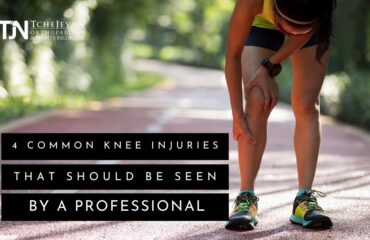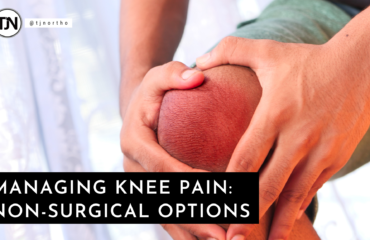One of the most common misconceptions that Dr. Tchejeyan has encountered through decades in orthopedics is that patients will have limited mobility after undergoing joint replacement surgery. Nothing could be further from the truth. In fact, Dr. Tchejeyan makes it his primary goal to remove pain and restore function in his patients. He’s been doing just that for over 20 years.
Who Is A Candidate For Joint Replacement Surgery?
There are three primary patient qualifications to determine the need for a joint replacement:
- X Ray or imaging findings show significant arthritis
- Patient is experiencing pain with activities of daily livings (ADLs)
- Patient is noticing declining function and has the inabiilty to participate in recreational and/or physical activities
Sometimes, a patient’s x-rays may indicate an issue with a joint, but they are not experiencing any pain as a result of it. In that case, Dr. T. does not recommend surgery. If, however, a bone deformity or abnormality exists, Dr. T. may recommend surgery despite significant pain in order to make the recovery from the inevitable surgery easier for the patient. As we age, deformities and their surrounding tissue make the bone structure more difficult to operate upon, so surgery is recommended sooner than later.
When it comes to pain and functionality, however, there’s always a strong justification for joint replacement surgery. In orthopedic cases like this, many patients complain of pain when walking, bending, or being physically active. They may rely on pain medicine or use a cane to get around. Dr. Tchejeyan seeks to improve functionality and eliminate the need for assistive devices like canes.
Will I Still Have Pain After Surgery?
In the orthopedics world, there are common methods for assessing what orthopedists call a “knee score”. Pain questionnaires are used for patients to assess their pain and functional decline pre-surgery. Measuring this data allows for patients and surgeons to effectively measure the results post-surgery.
Prior to a joint replacement, a patient may have a score of around 40 on a 100 point scale. The surgery guarantees anatomical improvement. However, to measure pain, the patient re-assesses the knee score after surgery to measure improvement in their level of pain. Restoration rarely will reach a score of 100, but scores between 92-95 post-surgery are very common.
Some patients experience minor pain post-surgery due to scarring, weather, and the sensation of the implanted device. Despite this, functionality is re-established and there are little to no limitations afterward.
What Level Of Activity Is Safe After Joint Replacement Surgery?
Each patient’s situation is unique, and post-surgical limitations should be discussed with your doctor. However, Dr. Tchejeyan sees his patients resume several physical activities such as skiing, cycling, swimming, golfing, and doubles racket sports. Due to the plastic polyethylene implants used in knee replacements, excessive running is not recommended.
Avoiding surgery for fear of immobility is essentially counterproductive. After joint replacement, pain and mobility are improved after surgery. A qualified surgeon can effectively provide the following benefits:
- Remove pain
- Improve function
- Correct deformity
- Eliminate the need for assistance devices
- Restore anatomical alignment
If you’re suffering from joint pain, it may be time to sit down and discuss your options with an orthopedist. Dr. Gregory H. Tchejeyan, often known as the “L.A. Knee Guy”, practices in Thousand Oaks, California. His friendly staff would be happy to set up a consultation and begin your journey towards healing! You can contact TJN Orthopedics here or visit the office at:
250 Lombard Street, 1st Floor
Thousand Oaks, CA 91360




